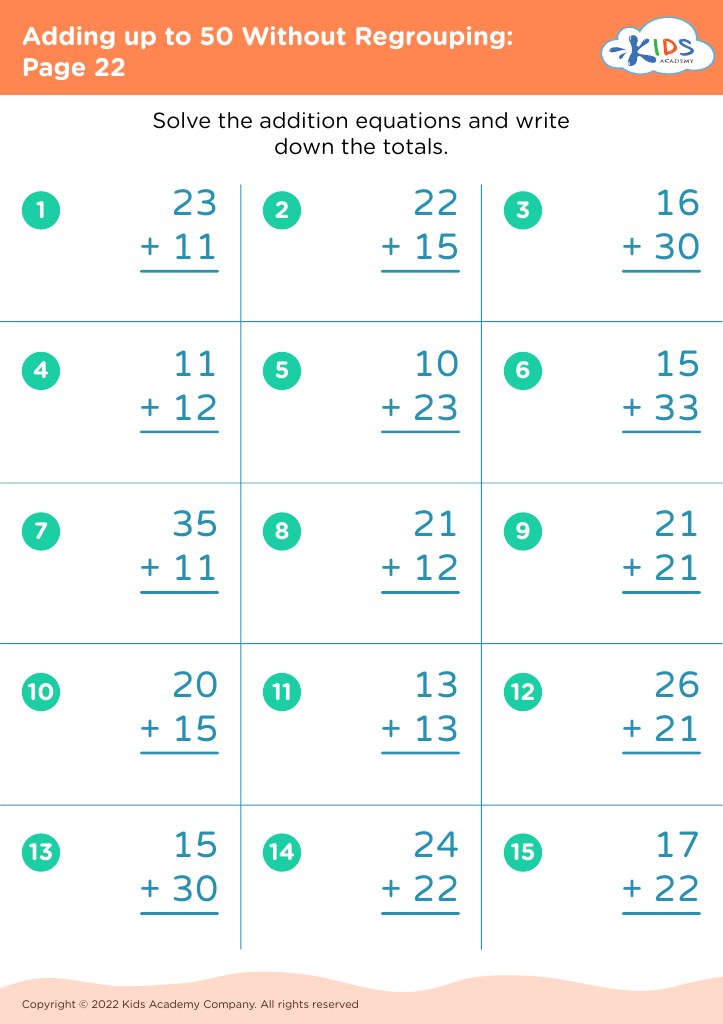Trace shapes Worksheets for Kids
1 filtered results
-
From - To
Question/Answer
What are some effective activities to train students’ Trace shapes skill when teaching them about Adding up to 50 Without Regrouping?
To train students' trace shapes skill while teaching them to add up to 50 without regrouping, incorporate activities like: 1. **Shape Tracing and Addition Mats:** Provide mats where students trace shapes that are segmented into different addition problems. 2. **Connect-the-Dots with Sums:** Students connect dots by following the sequence of sums up to 50, revealing a shape upon completion.
How to test a Grade 2 student’s Trace shapes skills?
To test a Grade 2 student's trace shapes skills, provide worksheets with dotted outlines of various shapes such as circles, squares, triangles, and rectangles. Ask the student to trace over these outlines carefully. Assess their accuracy in following the lines, the steadiness of their tracing, and their ability to recognize and name each shape after tracing.
How to train the Trace shapes skill in Grade 2 students learning about Adding up to 50 Without Regrouping?
To train Grade 2 students in the Trace shapes skill while learning about adding up to 50 without regrouping, integrate tracing activities with addition problems. For example, create worksheets where students trace shapes labeled with addition problems that sum up to 50 or less. This combines motor skill development with math practice, making learning engaging and multidisciplinary.













